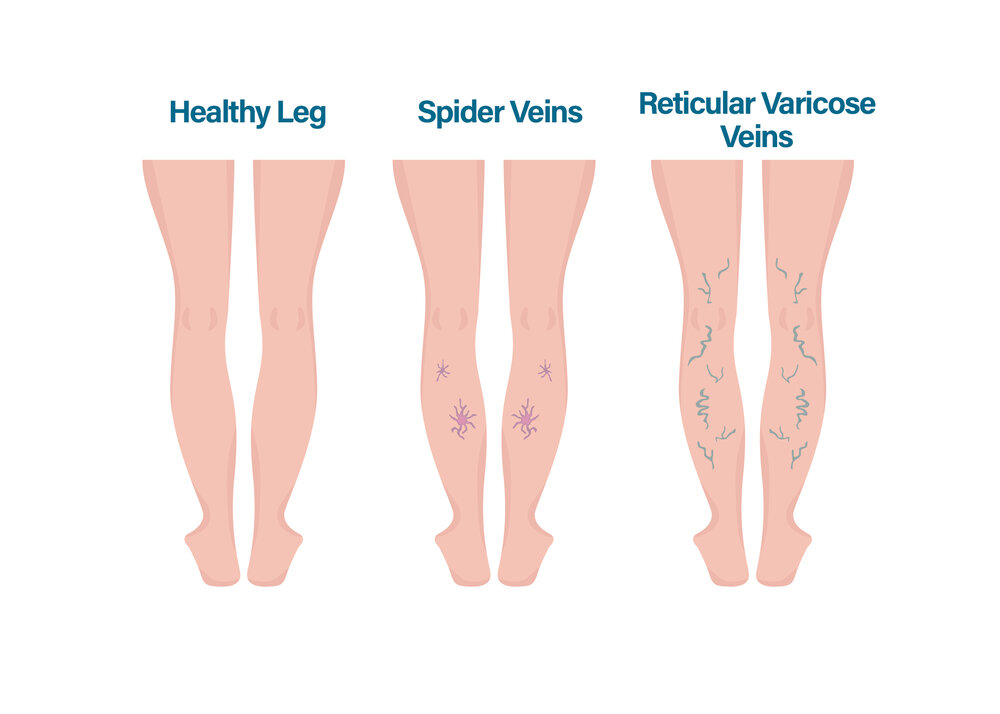Weak or damaged valves can lead to varicose veins. Arteries carry blood from the heart to the rest of the body. Veins return blood from the rest of the body to the heart. To return blood to the heart, the veins in the legs must work against gravity.
Muscle contractions in the lower legs act as pumps, and elastic vein walls help blood return to the heart. Tiny valves in the veins open as blood flows toward the heart, then close to stop blood from flowing backward. If these valves are weak or damaged, blood can flow backward and pool in the veins, causing the veins to stretch or twist.
The following can increase the risk of developing varicose veins:
- Age. Aging causes wear and tear on the valves in the veins that help control blood flow. Eventually, that wear causes the valves to allow some blood to flow back into the veins, where it collects.
- Sex. Women are more likely to develop the condition. Hormonal changes before a menstrual period or during pregnancy or menopause might be a factor because female hormones tend to relax vein walls. Hormone treatments, such as birth control pills, might increase the risk of varicose veins.
- Pregnancy. During pregnancy, the blood volume in the body increases. This change supports the growing baby but can also enlarge the veins in the legs.
- Family history. If other family members had varicose veins, there’s a greater chance you will too.
- Obesity. Being overweight puts added pressure on veins.
- Standing or sitting for long periods of time. Movement helps blood flow.
Complications of varicose veins, although rare, can include:
- Ulcers. Painful ulcers can form on the skin near varicose veins, particularly near the ankles. A discolored spot on the skin usually begins before an ulcer forms. See your health care provider immediately if you think you’ve developed a leg ulcer.
- Blood clots. Occasionally, veins deep within the legs become enlarged and might cause leg pain and swelling. Seek medical attention for persistent leg pain or swelling because it can be a sign of a blood clot.
- Bleeding. Occasionally, veins close to the skin burst. Although this usually causes only minor bleeding, it requires medical attention.
Improving blood flow and muscle tone might reduce the risk of developing varicose veins. The same measures that treat the discomfort from varicose veins can help prevent them. Try the following:
- Avoiding high heels and tight hosiery
- Changing your sitting or standing position regularly
- Eating a high-fiber, low-salt diet
- Exercising
- Raising your legs when sitting or lying down
- Watching your weight

